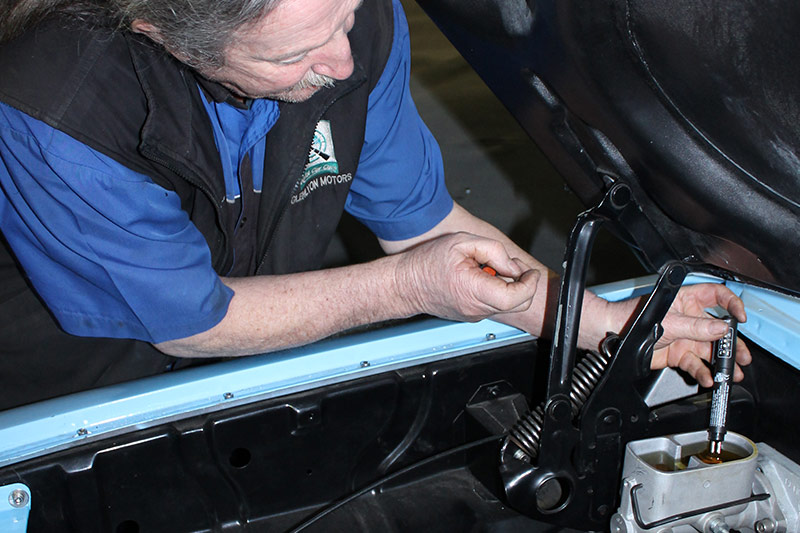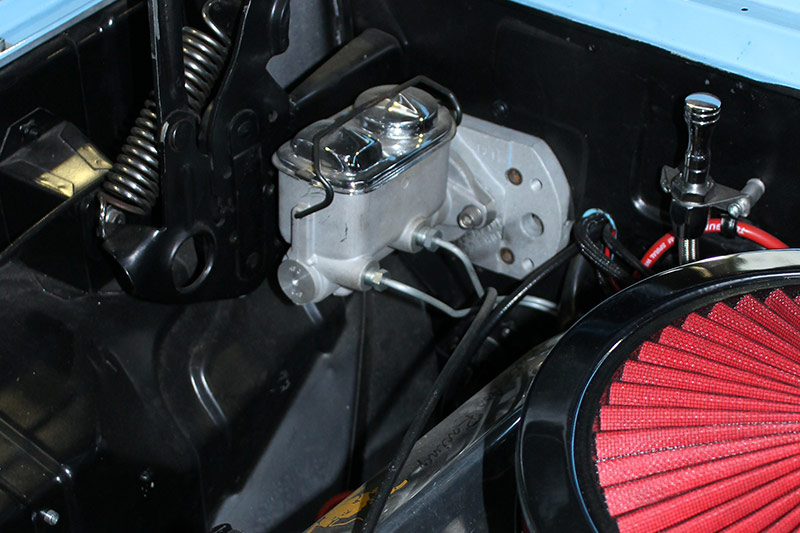Brake Fluid - Mick's Tips of the Trade



|
Is your car feeling spongy in the middle pedal? Time to change the fluid
Brake fluid is a grey area for the home maintenance person. What many don’t understand is it, like methanol, attracts water. It’s hygroscopic. So when you get into the engine bay of your old car and you find the underside of the master cylinder lid is rusty or corroded, it’s because of this.
When you drive the car, the water in the lines will get hot and may even boil. It does this at a much lower temperature than brake fluid, which isn’t good. It’s advisable to change the fluid at worst once every three years. You can test it – but we’ll get onto that in a moment.
People get scared of bleeding brakes, but it’s not a difficult task. You’re trying to achieve a couple of things: refresh the fluid, and remove any air bubbles, as air compresses easily and will make your spongy pedal worse.

The first step is to pull the old fluid out of the master cylinder. You can do this ideally with a syringe, though it can simply be soaked up with a rag (but don’t let it drip on painted surfaces!). Do this until it’s dry, wipe out any crud and crustaceans, then top it up with a freshly-opened container of fluid. Don’t use the one you’ve had sitting half empty on the shelf for months or years, as that defeats the entire purpose of the exercise. Keep the container handy, as you’ll be topping up as you go. The easiest way to bleed brakes on your own is first to leave the lid off the master cylinder. Then go to the furthest bleed nipple – usually at the rear, on the opposite side to the master cylinder. Open it up and let Mother Nature take over.
Gravity will roll fresh fluid through. Use a hose and container to collect it and leave it open until you see fresh fluid coming through. So long as you don’t touch the brake pedal, you won’t pull air back into the system.
Close that one off, top up the master cylinder and go to the next furthest away. Repeat the process until all the wheels are done. This takes time, but it works. With a friend on hand there are quicker method options.

Brake fluids are a bit of a minefield, as there are lots of options out there. The best rule of thumb is to stay with the older DOT 3 or 4 on older cars. And don’t mix up fluid types. Under no circumstances should you put silicon fluid in your older car – it just won’t be compatible with the seals and hoses and you will end up with a complete disaster.
One tool we use in the trade, that’s become much cheaper as time has gone by, is a brake fluid tester. It’s an electronic machine with two probes and gives you an indicator of when it’s time to lose the fluid. It’s a great little gadget to have in the toolbox.
Happy braking!
Mick owns Glenlyon Motors, an expert workshop and car storage facility in Brunswick, Melbourne. Call him on (03) 9380 5082.
Unique Cars magazine Value Guides
Sell your car for free right here
Get your monthly fix of news, reviews and stories on the greatest cars and minds in the automotive world.
Subscribe

.jpg)













